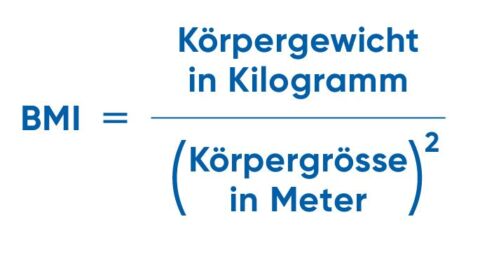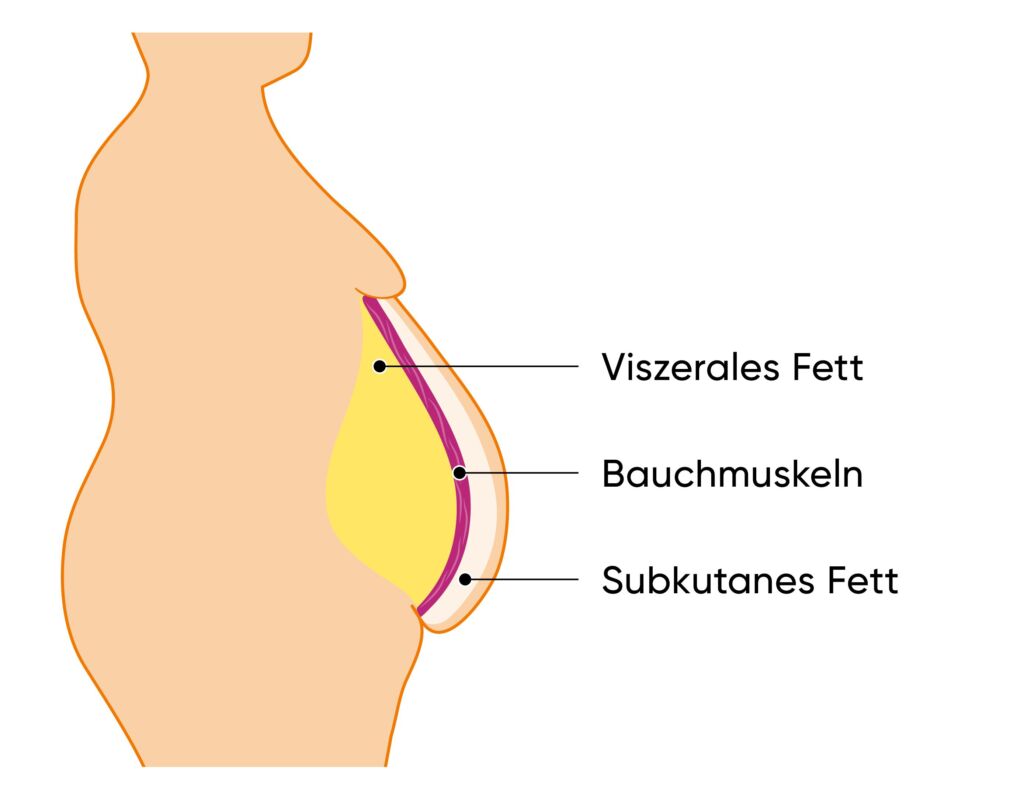Obesity Consultation
In the obesity consultation, we care for patients who are overweight. We discuss individualized nutrition and exercise measures and evaluate surgical operations.
Body mass index (BMI) or Body mass ratio tells you if your weight matches your height. Use our free BMI calculator to quickly find out whether your weight is within the normal range or whether you are too heavy or too light. Depending on the outcome, this may have an impact on your health.
BMI is calculated using a mathematical formula. Take the weight in kilograms and divide it by the height in meters squared.
 |
Just type your body mass into the BMI calculator and get the result immediately. |
The BMI helps to estimate one’s own body weight and roughly answers the following questions:
Depending on the result of the BMI calculator, you belong to one of these six groups:

Every person has an individual physique, which the BMI does not take into account. However, the proportion of muscle and fat tissue plays a role in estimating weight, as do age and gender. It is best to consult a professional after an initial assessment of your weight with the BMI calculator.
If your body weight is outside the normal weight range (underweight or overweight), you should seek advice from a specialist at least once. This way you can see if you should take measures to change your weight.
If you are very preoccupied with your eating behavior, this may indicate an eating disorder. Several types of eating disorders are distinguished, such as anorexia, bulimia, atypical eating disorders, or binge eating. Here, too, we recommend consulting with a specialist.
In the obesity consultation, we care for patients who are overweight. We discuss individualized nutrition and exercise measures and evaluate surgical operations.
The Center for Eating Disorders offers a variety of therapeutic options to help you deal with eating problems.
A few kilos too much on the scale does not mean that you will immediately become ill. However, being overweight increases the risk of certain diseases in the long term. These include:
In the long term, underweight can lead to poor concentration, bone loss (osteoporosis), immune system disorders (susceptibility to infections) and infertility.
The individual physique is not included in the BMI calculation. However, the ratio between muscle and fat tissue as well as fat distribution are also important characteristics for correctly estimating body weight.
Muscles are tightly built and take up less space on the body with the same weight than fat. Therefore, a trained person can look slim and have no health risks even though the BMI is high. On the other hand, the weight of a lighter, untrained person with high fat content can already harm their health.
Fat distribution on the body plays a role when it comes to its impact on health. Fat around the internal organs in the abdomen (visceral fat) is more damaging than fat just under the skin (subcutaneous fat). Waist-to-hip ratio is a measure used to evaluate fat distribution.

The BMI calculator and the corresponding evaluation by weight classes are valid from the age of 18. In older persons, the BMI may be somewhat higher, but care should still be taken to minimize weight gain.
Women usually have a naturally higher percentage of fat and less muscle than men. Because of your physique, BMI limits can be set slightly lower for women than for men.
Because fat distribution is important for health risk, the waist-to-hip ratio is also often used. The waist circumference is divided by the hip circumference. A value above 0.8 in women and 0.9 in men indicates abdominal obesity, which is associated with an increased risk of cardiovascular disease.
As the University Center for Obesity and Metabolic Surgery, we offer comprehensive and holistic care to patients suffering from severe overweight/obesity and related metabolic diseases.
As a university center for eating disorders (ZES), we offer patients suffering from anorexia (anorexia nervosa), bulimia, binge eating and/or other atypical eating disorders comprehensive care in an inpatient, day clinic and outpatient setting.